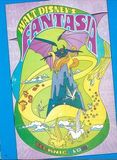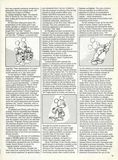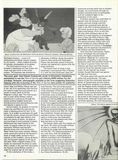IT WAS AFTER the success of Snow White and the Seven Dwarfs that Walt Disney decided to give Mickey Mouse a comeback. With the introduction of new characters to oppose Mickey's popularity — Donald Duck, Goofy, et al — Disney felt he had a responsibility to the little mouse. After all, it had been all the hard work over the years with the early Mickey cartoons that had enabled the Disney studio to reach a peak of technical achievement with Snow White, in late 1937.
Disney felt that the format of the Silly Symphonies, a series of successful cartoon shorts made between 1928 and 1940, was an apt vehicle for Mickey Mouse. A piece of music that Disney particularly liked was The Sorcerer's Apprentice by Paul Dukas, which told the story of a young magician tampering with his master's magic spells and creating all kinds of havoc. Disney felt that this, the ultimate Silly Symphony, needed a superlatively conducted, played and recorded musical score.
By chance, in 1938 at a Hollywood party, Walt Disney met Leopold Stokowski, who was resident conductor of the Philadelphia Orchestra. Stokowski expressed a wish to work with Disney. Disney knew immediately the conductor was a perfect choice to take charge of the musical end of the project. A delighted Stokowski rehearsed the music and recorded it while the studio went ahead with the animation.
But even with a small amount of pruning, the music would still carry the length of the short over the usual running time. Gradually, after great discussion, a decision was taken to broaden the concept to encompass other orchestral works. A series of "superior" Silly Symphonies. But the idea to present each piece as a separate short was abandoned.
Besides, here was another chance for the animators to tackle some really innovative animation techniques.
Deems Taylor, who was well-known to radio audiences for his programmes on classical music, joined the studio to act as a kind of liaison between Disney and Stokowski and, aided by the heads of the art and music departments, began to select the pieces of music required for the film. This task took three weeks. Though hundreds of orchestral works were considered, eight separate pieces were finally chosen. It is likely that Stokowski was the governing factor in the choice of music. After all, he was already well associated with two of the pieces. The first was a special orchestral rendering by Stokowski from the original work, the Tocatta and Fugue in D Minor by Johann Sebastian Bach. The second, Rite of Spring by Ivor Stravinsky, had been widely performed by Stokowski in America.
All this time ideas grew about the presentation of the pieces and it was finally decided to release the music and animated sections together in one feature-length film. The title "Concert Programme" was adopted for the project, but the title "Fantasia", a musical term meaning "freer development of a given theme" was preferred and, as nobody could improve on it, the name stuck.
[…]




